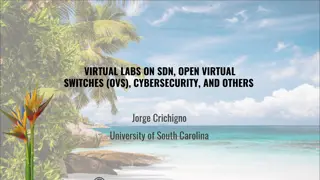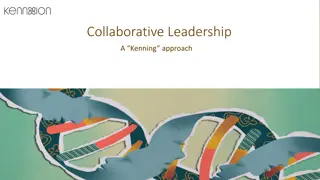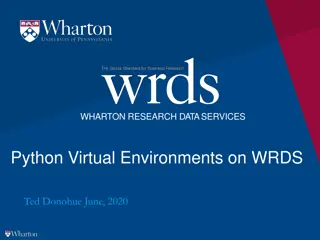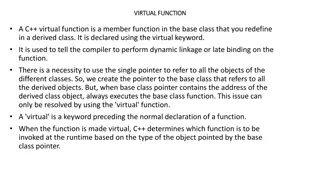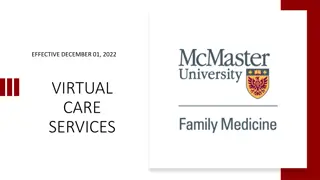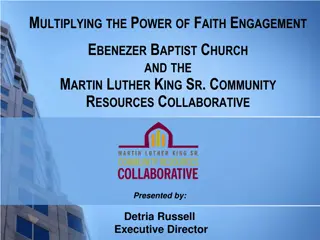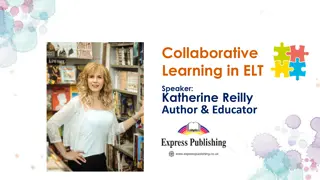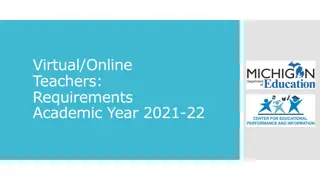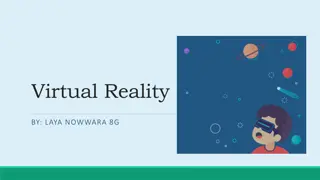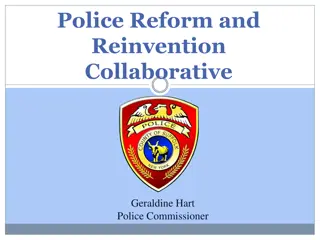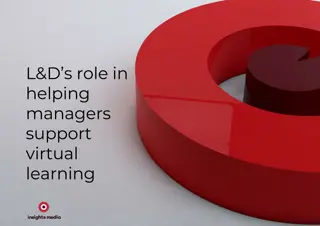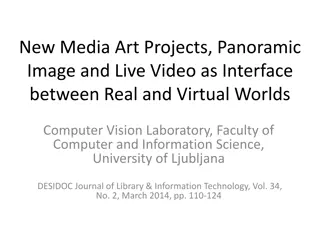Virtual Research Environments: Collaborative Tools for Researchers
Online systems like Virtual Research Environments (VREs) offer collaboration support, document hosting, and discipline-specific tools for research teams to easily share information and results. Explore the features and benefits of VREs in enhancing research outcomes.
Download Presentation

Please find below an Image/Link to download the presentation.
The content on the website is provided AS IS for your information and personal use only. It may not be sold, licensed, or shared on other websites without obtaining consent from the author.If you encounter any issues during the download, it is possible that the publisher has removed the file from their server.
You are allowed to download the files provided on this website for personal or commercial use, subject to the condition that they are used lawfully. All files are the property of their respective owners.
The content on the website is provided AS IS for your information and personal use only. It may not be sold, licensed, or shared on other websites without obtaining consent from the author.
E N D
Presentation Transcript
1 BoF: VREs- Keith G Jeffery & Helen Glaves
Agenda 2 Tour de Table (Keith Jeffery) Introduction to the meeting and its purpose (Keith Jeffery) Existing Draft Case Statement (Helen Glaves) Discussion (moderator Keith Jeffery) Conclusions and Next Steps (Helen Glaves)
Rationale 5 Confusion Need agreed-upon concepts and definitions Requirement Researchers demanding workbench to cover all their requirements Timeliness VRE development projects underway http://www.vre4eic.eu/related-projects
Virtual Research Environment (VRE) 6 A VRE or virtual laboratory is an online system helping researchers collaborate. Features usually include: Collaboration support (Web forums and wikis) Document hosting Discipline-specific tools, such as data analysis, visualisation, or simulation management May include publication management and teaching tools such as presentations and slides Important in fields where research is primarily carried out in teams spanning institutions and even countries The ability to easily share information and research results is valuable. (Wikipedia)
VREs 7 Becoming of great interest in all regions where research data is being used actively. Emerging European model: VREs to access one or more e-Research Infrastructures (e.g. EPOS, ENVRI+, EXCELERATE) These in turn utilise common e-Infrastructures (e.g. GEANT, EUDAT, PRACE, EGI)
Proposed IG 8 Address: architectural principles governance issues technologies design and development best practices Will relate to just about all RDA groups Draw on expertise of RDA groups Be based, when possible, on RDA output products and recommendations
Approaches 9 Built upon: content management systems learning environments access to datasets analysis / visualisation / modelling software tools digital libraries (publications) research management systems collaborative tools
An Overview (European) 10 VRE Reference Architecture Components Implementation e-RI e.g. ENVRI + e-RI e.g. EPOS e-RI e-RI e-RI e-I (GEANT, EGI, OSC, EUDAT )
Interfacing 11 VRE Collaboration Communication Research Management Reference Architecture Components Implementation Interfaces to (for each e-RI): (a) AAAI systems (b) Catalog of users, datasets, software services, resources (computing, equipment/detectors), services with associated information on rights, costs And from this (a) Access to datasets (b) Access to (APIs of) software services (c) Access to workflows (d) Access to computing resources (including GRIDs and CLOUDs) (e) Access to equipment/detectors for data taking and parameter control
Interfacing 12 VRE Collaboration Communication Research Management Reference Architecture Components Implementation Interfaces to (for each e-RI): (a) AAAI systems (b) Catalog of users, datasets, software services, resources (computing, equipment/detectors), services with associated information on rights, costs And from this (a) Access to datasets (b) Access to (APIs of) software services (c) Access to workflows (d) Access to computing resources (including GRIDs and CLOUDs) (e) Access to equipment/detectors for data taking and parameter control
Questions 13 Interest: Is there interest in evolving from BoF to IG? If so: Organisation: more co-leads? Process: case statement (next) Schedule: timeline aim for next plenary? Intermediate meetings: online?
Case Statement 14 Review and discuss
Discussion 15


